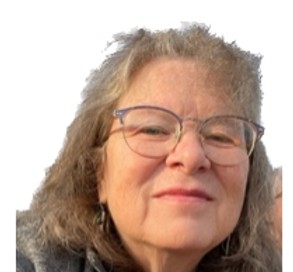Alienation is a form of living death. It is the acid of despair that dissolves society.
-Martin Luther King, Jr. in The Trumpet of Conscience
It is no secret that our entire nation, and perhaps the entire world, is suffering from an “Epidemic of Loneliness” and disconnection. The COVID 19 pandemic with its attendant isolation and losses has amplified an already brewing crisis into a national emergency. In The New York Times Sunday, April 30 Edition, Vivek H. Murthy, US Surgeon General, writes about his three point plan to attack this problem nationwide:
- First, we must strengthen social infrastructure — the programs, policies, and structures that aid the development of healthy relationships. …
- Second, we have to renegotiate our relationship with technology, creating space in our lives without our devices so we can be more present with one another. …
- Finally, we have to take steps in our personal lives to rebuild our connection to one another — and small steps can make a big difference.
Various pundits, bloggers, podcasters and journalists have weighed in on the subject, each with their own spin, but none that I have encountered have disagreed with Murthy’s basic premises.
Life is hard for most. We, as a people, are wounded, scared and confounded about how to rebuild our lives. The fabric of our world is profoundly changed. The assumptions we had about our futures and those of our children are perhaps no longer true, no pathways reliable. Global economic crisis, political instability and the increasingly visible effects of global warming have further obfuscated the future, especially for the young who have been deprived of crucial years of social development that cannot be reclaimed.
For those individuals who were already outliers by definition, this condition is amplified both by inherent feelings of disconnection from mainstream society, as well as an increased parochialism within our society at large. Fear and disconnect continue to drive violent actions that have become almost commonplace. Income inequality continues to exacerbate siloed populations that foment fear of “the other.” Across the globe, young people are questioning the basic assumptions they, their families and communities have held. Many of the most gifted individuals are eschewing university education, feeling that it is “a scam” and something that is irrelevant to their lives. Many are rejecting the idea that their profession should be the center of their lives and are choosing to focus on prioritizing family, travel, or community with work becoming simply a means to an end. Their decision to “bushwhack” their futures can be deeply disturbing to professional and highly educated parents for whom academic accomplishment and professional success have been a key component of their own definitions of self.
Still others are so disillusioned that they are unable to move forward at all. Faced with what feels like an unnavigable world, they have thrown up their hands and come to the conclusion that life is “impossible.” It is frightening and difficult to move forward into a future that is so uncertain. Growing up and forging an adult life is hard under the best circumstances. Doing so effectively requires the freedom and courage to try things, make mistakes, recover and start again. The perfectionism with which most gifted individuals struggle can produce a nearly insurmountable barrier to moving forward when the possibilities seem simultaneously endless and non-existent.
So what can we do? Dr. Murthy’s plan is a good one. It is simple and straightforward. It is both easy to envision a remedy and incredibly difficult to implement. At the risk of oversimplification, here are my thoughts:
- Practice Radical Acceptance – no holds barred, no subjects taboo, no fears banished. What is the reality of your situation? Different people involved will likely have differing views. Holding all realities simultaneously is part of the solution. None are incorrect, and they are unlikely to be the same. Articulating the problem will not make it worse. Articulating your fears will not make them come true. Conversely, shining a metaphorical light in the darkness brings relief and freedom. You cannot move forward without understanding where you are.
- Create a Vision of the Future that is Worth Living For – this one is perhaps the most difficult. It requires embracing the losses of what we had or hoped to have. In many cases, it requires real grieving. Loved ones have died, jobs and careers have been lost, students graduated high school and tried to start college in isolation connected only through technology. This is where we have to exercise the courage to create a new future; an authentic future that preserves and creates connections and fosters mutual respect. There is a real danger for people to become lost in rigid dogma at this stage; either political or personal. The draw of a premade ideology is hard to resist if one is frightened and desperate.
- Move Forward – After 9/11, Fred Rogers spoke to the children of the world and said, “When I was a boy and I would see scary things in the news, my mother would say to me, ‘Look for the helpers. You will always find people who are helping.’” To this, I would add, look for ways that you can be the helper. Look for ways you can connect with people for mutual benefit. Make the effort to find or create in-person community and commit to sustaining it. Find poetry, music, art and companionship that move your soul. Share them with others. Create something just for the joy of doing so. Use your body. Pay attention to nature and to your place in it. We can be surrounded by wonder of things that are tangible and real. While the future is uncertain, we can find beauty and satisfaction in the here and now. What we do have is our present.
As a group, we are often focused on delineating and defining what makes gifted people different from “the average.” At this moment in time, I think it is perhaps more important to focus on what makes us the same. We all have great talents and significant vulnerabilities. Our best future will be created by acknowledging and owning those things without shame while working to build community that asks the same of others. Through this lens, I can see a bright future indeed. As Pema Chödrön so beautifully articulates in When Things Fall Apart:
“Things falling apart is a kind of testing and also a kind of healing. We think that the point is to pass the test or to overcome the problem, but the truth is that things don’t really get solved. They come together and they fall apart. Then they come together again and fall apart again. It’s just like that. The healing comes from letting there be room for all of this to happen: room for grief, for relief, for misery, for joy.”

